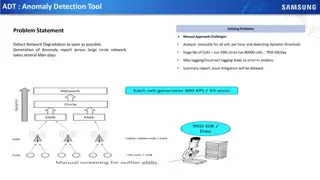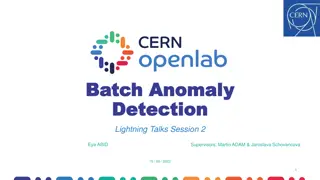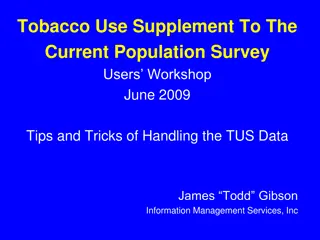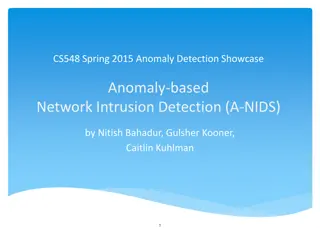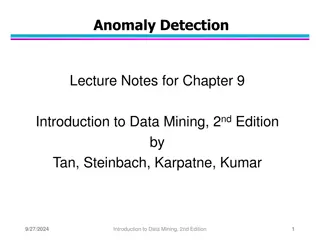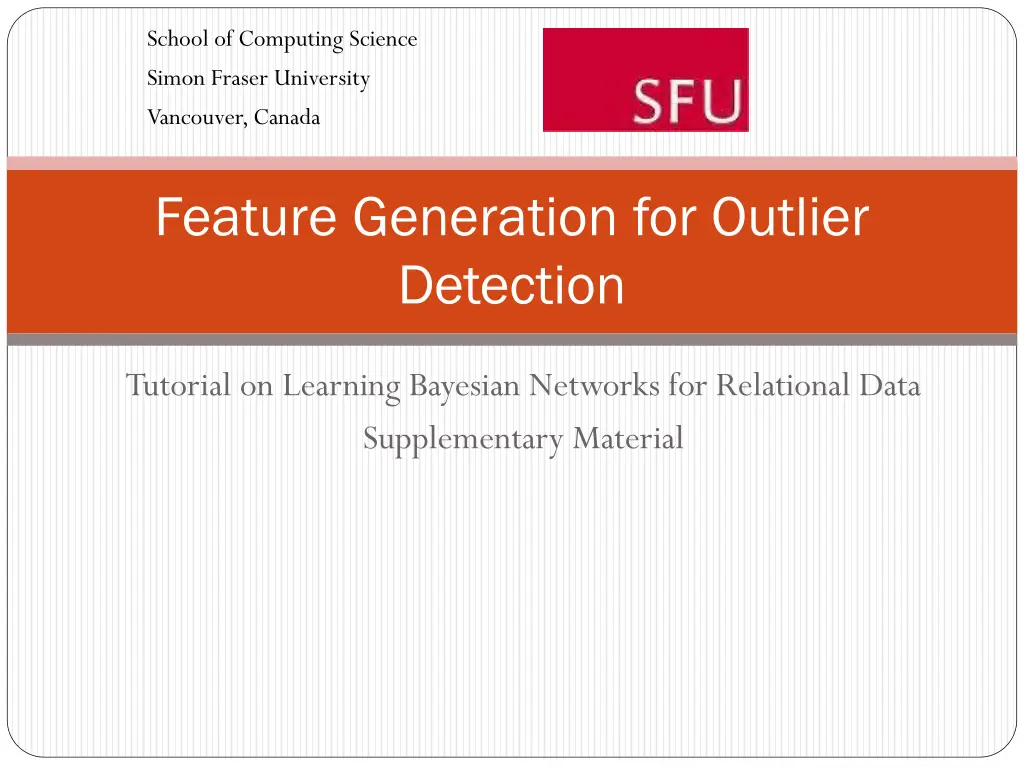
Feature Generation for Outlier Detection in Bayesian Network Learning
Explore the process of feature generation for outlier detection using relational data in Bayesian networks. Learn about propositionlization and relation elimination while including first-order random variables beyond the class variable's Markov blanket. See examples and feature vectors to understand the classification and feature matrix creation for outlier detection.
Download Presentation

Please find below an Image/Link to download the presentation.
The content on the website is provided AS IS for your information and personal use only. It may not be sold, licensed, or shared on other websites without obtaining consent from the author. If you encounter any issues during the download, it is possible that the publisher has removed the file from their server.
You are allowed to download the files provided on this website for personal or commercial use, subject to the condition that they are used lawfully. All files are the property of their respective owners.
The content on the website is provided AS IS for your information and personal use only. It may not be sold, licensed, or shared on other websites without obtaining consent from the author.
E N D
Presentation Transcript
School of Computing Science Simon Fraser University Vancouver, Canada Feature Generation for Outlier Detection Tutorial on Learning Bayesian Networks for Relational Data Supplementary Material
Feature Generation for Outlier Detection aka Propositionalization, Relation Elimination Similar to feature generation for classification Main difference: include all first-order random variables, not just the Markov blanket of the class variable Related work: The Oddball system also extracts a feature matrix from relational information. 2/n cite oddball
Example: population data gender = Man country = U.S. gender = Man country = U.S. gender = Woman country = U.S. gender = Woman country = U.S. False n/a False n/a ActsIn salary True $500K False n/a False n/a True $5M False n/a True $2M runtime = 98 min drama = true action = true runtime = 111 min drama = false action = true 3/n
Example: Class Bayesian Network gender(A) Drama(M) ActsIn(A,M) 4/n Presentation Title At Venue
Feature Vectors (I) Movie Fargo Kill Bill Drama T F ActsIn(A,M) Drama(M) Class Bayesian Network gender(A) ActsIn(A,M) Feature Matrix for ActsIn(A,M) T F 0 1 1/2 1/2 1/2 1/2 1/2 1/2 Drama(M) Feature Matrix for Drama(M) T F 1/2 1/2 1/2 1/2 1/2 1/2 1/2 1/2 5/n Presentation Title At Venue
Feature Vectors (II) Movie Fargo Kill Bill Drama T F ActsIn(A,M) Drama(M) gender(A) gender(A) M M M M W W W W ActsIn(A,M) Drama(M) T T F F T T F F T F T F T F T F 0 0 1/2 1/2 0 0 0 0 0 0 0 0 0 1/2 1/2 0 1/2 0 0 1/2 0 0 0 0 0 0 0 0 0 1/2 1/2 0 6/n Presentation Title At Venue
Concatenate all Feature Vectors 0 1 1/2 1/2 0 0 1/2 1/2 0 0 0 0 1/2 1/2 1/2 1/2 0 0 0 0 0 1/2 1/2 0 1/2 1/2 1/2 1/2 1/2 0 0 1/2 0 0 0 0 1/2 1/2 1/2 1/2 0 0 0 0 0 1/2 1/2 0 7/n Presentation Title At Venue
Form Feature Matrix transpose to form single-table feature matrix 1/2 1/2 1/2 1/2 0 1 0 0 0 0 0 0 1/2 1/2 1/2 1/2 1/2 1/2 0 0 0 0 0 0 1/2 1/2 1/2 1/2 1/2 1/2 0 0 0 0 0 0 1/2 1/2 1/2 1/2 1/2 1/2 0 0 0 0 0 0 8/n Presentation Title At Venue


